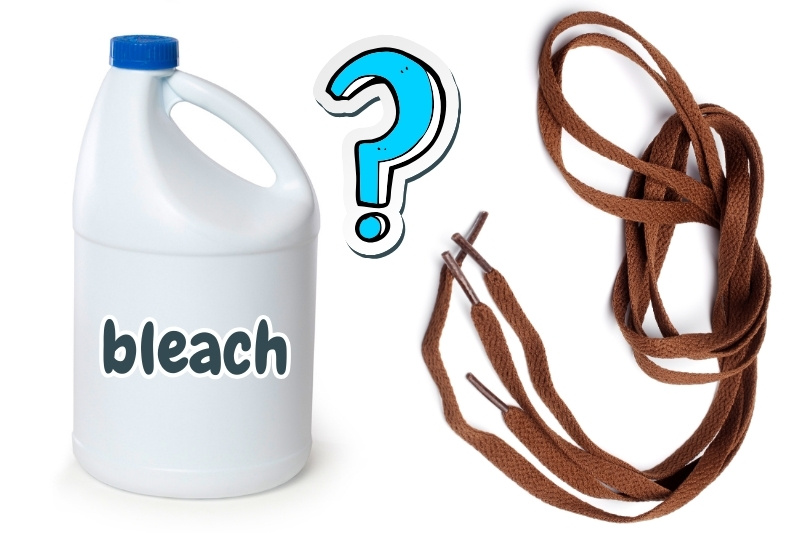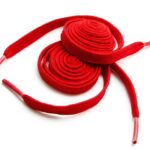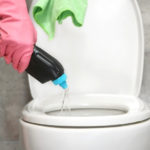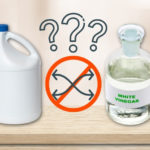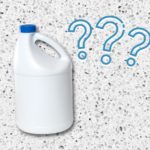Are you thinking about cleaning your grotty-looking shoelaces with bleach, but you’re not sure if you’re supposed to do this? Don’t worry. It’s a dilemma faced by many grubby shoelace owners!
On the one hand, bleach seems like the easiest, cheapest, and quickest way to breathe new life into bin-worthy laces.
But on the other hand, bleach is a chemical that could do more harm than good to the shoelaces. It could even make them unusable!
So, can you bleach laces or not?
Yes, you can bleach some shoelaces. However, what the shoelaces are made from, their colour and what type of bleach you use must be considered before you carry out the bleaching activity.
Take note of the following:
- The safest form of bleach to use is oxygen-safe bleach (non-chlorine bleach). This bleach can be used on white and colourful laces and hard-wearing and synthetic materials.
- In contrast, you can only use chlorine bleach on laces that are white in colour and made from a hard-wearing material like cotton.
- You cannot bleach shoelaces that are made from delicate materials like leather. In this case, you must treat the laces using an appropriate leather cleaner.
- In addition to the above, you must always do a patch test before you bleach your shoelaces, just in case something goes wrong and you damage or discolour your laces!
How to Use Bleach on Shoelaces
Chlorine bleach (white cotton shoelaces only)
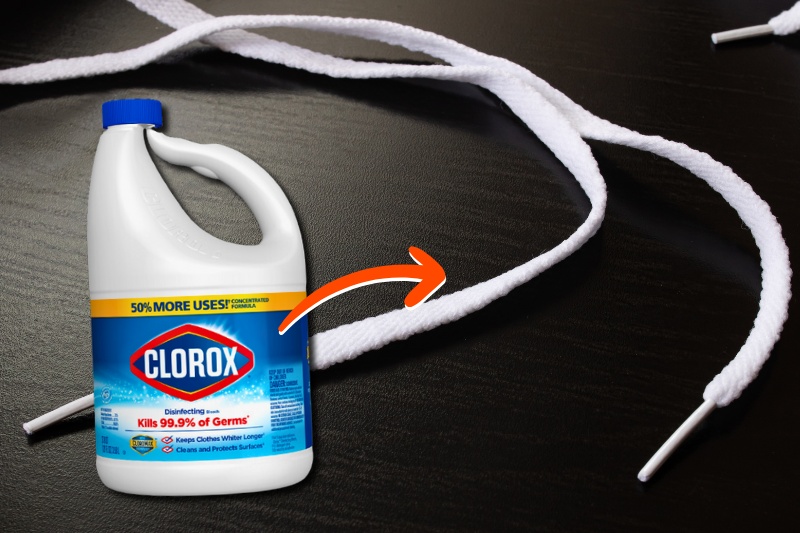
The method below is suitable for white laces made from a hard-wearing material like cotton.
You should avoid bleaching colourful shoelaces, those made from synthetic fibres (polyester and nylon) and those made from leather using this treatment.
Steps to follow:
- Ensure the laces can be bleached before you bleach them. Do a patch test.
- Put gloves and eye protection on and set up a clear workspace that’s protected with newspapers.
- Mix two cups of warm water and a teaspoon of chlorine bleach in a bowl.
- Take the shoelaces out of the shoes.
- Brush the dirt off the laces using an old toothbrush.
- Submerge the shoelaces in the bleach-water solution.
- Allow the laces to soak for five minutes, but no more.
- Rinse the solution off the shoelaces using warm water.
- Hang the laces up to air dry.
Oxygen bleach (colourful and synthetic shoelaces)
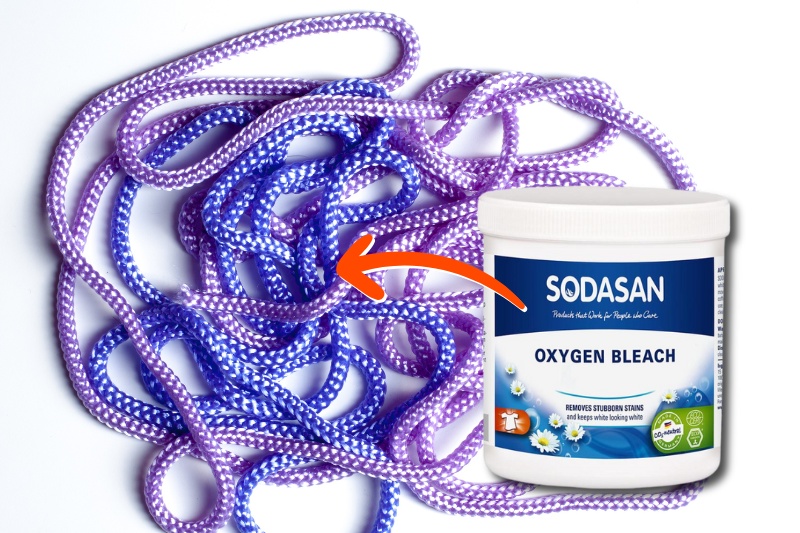
The method below is suitable for colourful laces as well as white ones. Remember to do a patch test before you treat your colourful laces with bleach because you could permanently discolour them. Do not clean leather shoelaces using this method.
Steps to follow:
- Make sure the shoelaces can be bleached before you bleach them. Read the tag on the shoe or packaging and perform a discreet patch test.
- Put gloves and eye protection on and set up a workspace.
- Take the shoelaces out of the shoes.
- Mix one tablespoon of oxygen bleach with two cups of warm water.
- Brush the dirt off the laces using an old toothbrush.
- Submerge the shoelaces in the bleach-water solution. Make sure the laces are held under the water.
- Allow the laces to soak for two hours, or more if the laces are really dirty.
- Rinse the shoelaces clean.
- Hang the laces up to air dry.
Will Bleach Ruin Shoelaces?
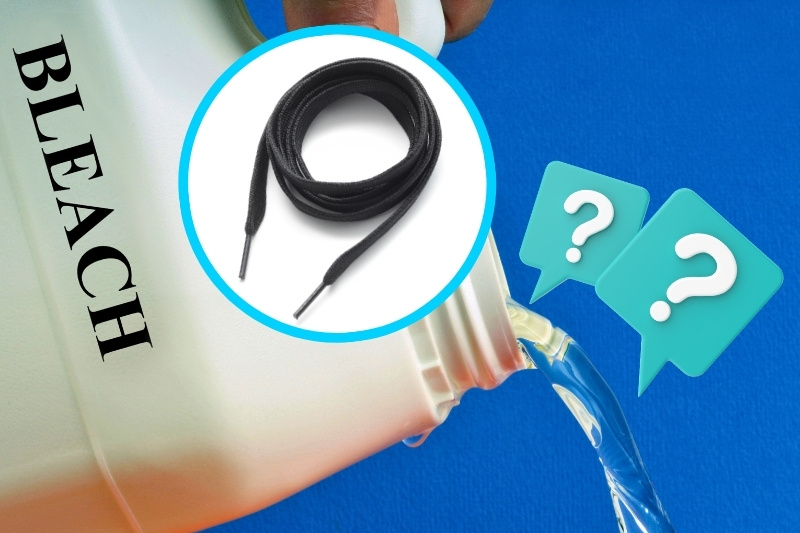
As mentioned above, bleach can ruin your shoelaces if you misuse the solution.
For example, if you bleach shoelaces that cannot withstand being bleached (like leather), you risk damaging them beyond repair.
Similarly, if you bleach colourful laces with chlorine bleach, you could permanently discolour them.
In contrast, if your laces can be bleached, you use the correct type of bleach (oxygen-safe), dose, and treatment method, you shouldn’t damage your laces.
In short, if bleach is used safely and appropriately, it can be used to brighten dulling shoelaces.
Before you use bleach on your shoelaces, consider the following points.
Read the care label that comes with your shoes before you treat them
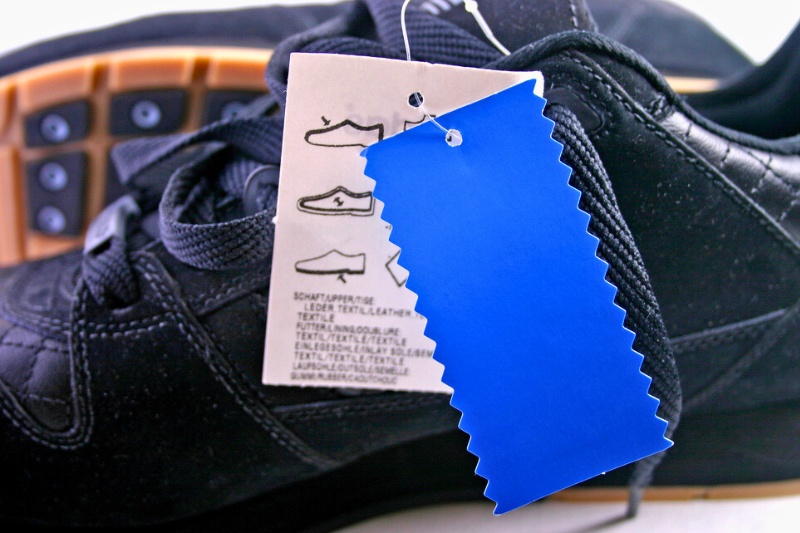
If you see the symbol for ‘do not bleach’ – a triangle with an X going through it – follow this instruction and steer clear of the bleach. Use an alternative treatment listed below.
If you can bleach the shoelaces, take note of the bleaching symbol and adhere to it. A triangle with two diagonal lines means you can bleach the laces with oxygen-safe bleach. A blank triangle means you can use any form of bleach on your laces.
What the shoelaces are made from will determine what bleach you can use on them
Oxygen bleach is the milder form and can be used to treat white and colourful laces as well as those made from hard-wearing and synthetic materials.
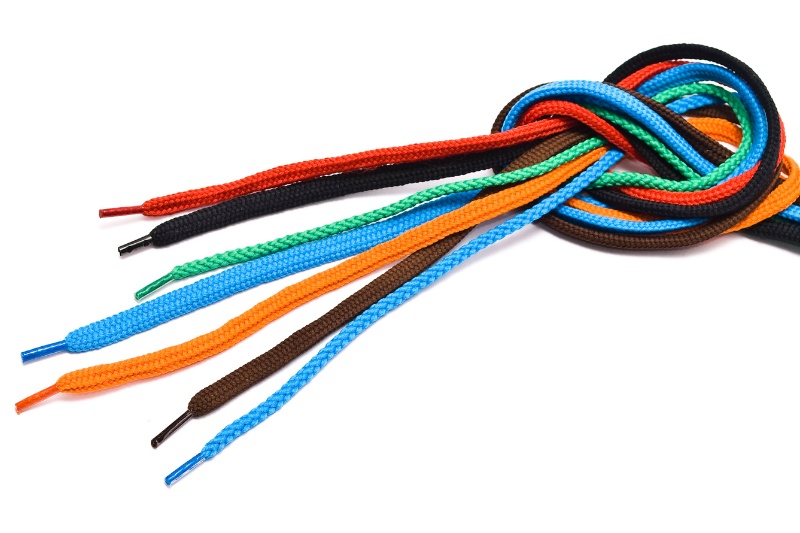
The colour of the laces will determine what bleach you can use
Colourful laces should only be treated with oxygen bleach. Chlorine bleach should be reserved for white cotton shoelaces.
Chlorine bleach can potentially break down the fibres in some shoelaces
This is particularly true if they’re not made from a hard-wearing material, and could render them useless. Always do a patch test when using bleach.
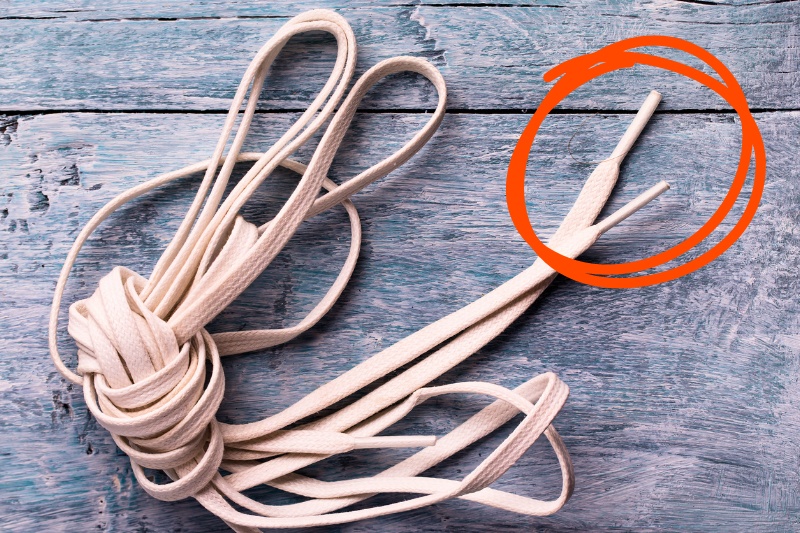
Be careful when bleaching shoelaces with plastic aglets
The aglet (the piece on the end of the shoelace) is usually made from plastic or metal. Its purpose is to stop the lace from unravelling and to make it easier to feed the lace through the eyelets on shoes.
A plastic aglet can sometimes be damaged by bleach, particularly chlorine bleach. So, consider this before you bleach your laces and ensure the bleach is sufficiently diluted in water to try and reduce the negative consequences.
Alternative Methods to Clean Shoelaces Without Using Bleach
You won’t be able to use bleach on every type of shoelace, so here are some other ways you can clean up and rejuvenate your dull laces:
Note: You must remove your shoelaces from their shoes before you clean them.
Hot water
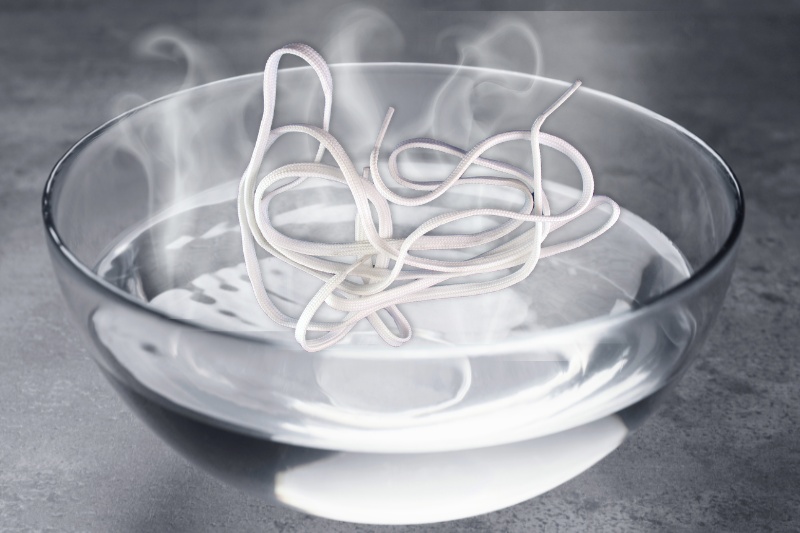
If your shoelaces need a little TLC, clean them using hot water. Simply hold the laces under hot water or submerge them in a bowl for a few minutes. During this time, the water will dislodge some of the dirt.
Of course, this method isn’t going to remove toughened grime, but it’s a backup option if you’re in a pinch!
Clean your dirty shoelaces in the washing machine
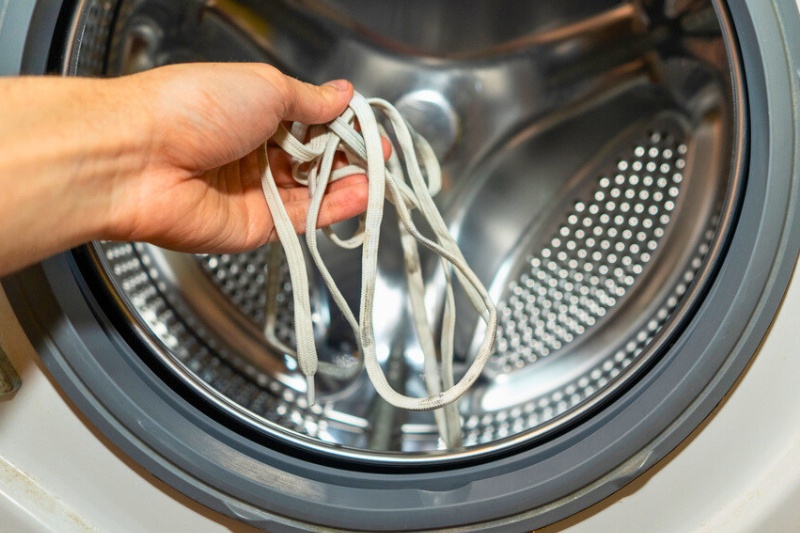
The simplest way to clean shoelaces is in a washing machine. You can clean many pairs of laces at once. It won’t take long, and the appliance can remove most of the grime for you.
Follow these steps:
- Scrub off loose dirt using an old toothbrush.
- Pop your laces into a mesh laundry bag (to keep them safe during the wash).
- Add some other laundry to the drum. Make sure they’re a similar colour.
- Put a regular amount of laundry detergent into the appliance and start the cycle.
- Remove the laces from the drum when the cycle is over.
- Take the shoelaces out of the mesh laundry bag and dry the laces.
Washing-up liquid
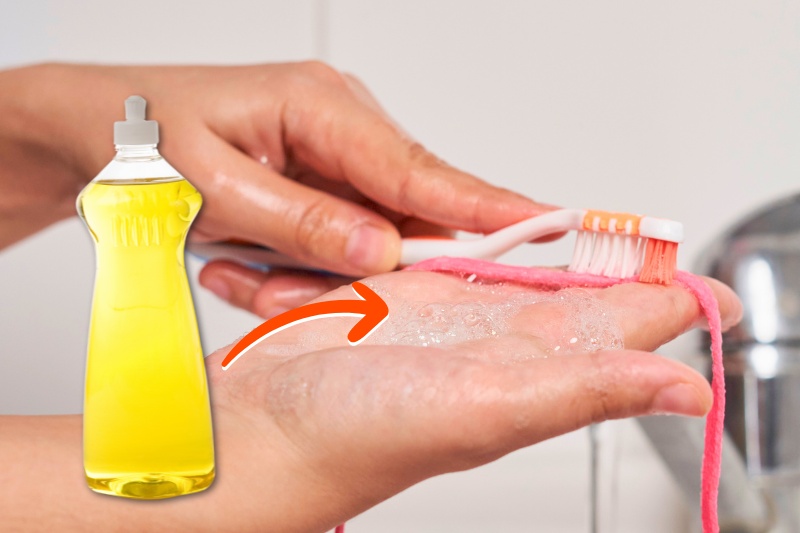
If you’ve not got access to a washing machine, hand wash your shoelaces with some washing-up liquid and warm water instead. Dishwashing liquid is great at removing troublesome and greasy deposits. It’s also readily available at home!
Follow these steps:
- Fill a sink with warm water.
- Add a few blobs of washing-up liquid to the water.
- Put the laces in the water.
- Agitate the shoelaces for a few minutes and then leave them to soak for 30 minutes.
- For stubborn blemishes, rub them with an old toothbrush.
- Rinse the laces off when you’re done, and allow them to air dry.
White vinegar
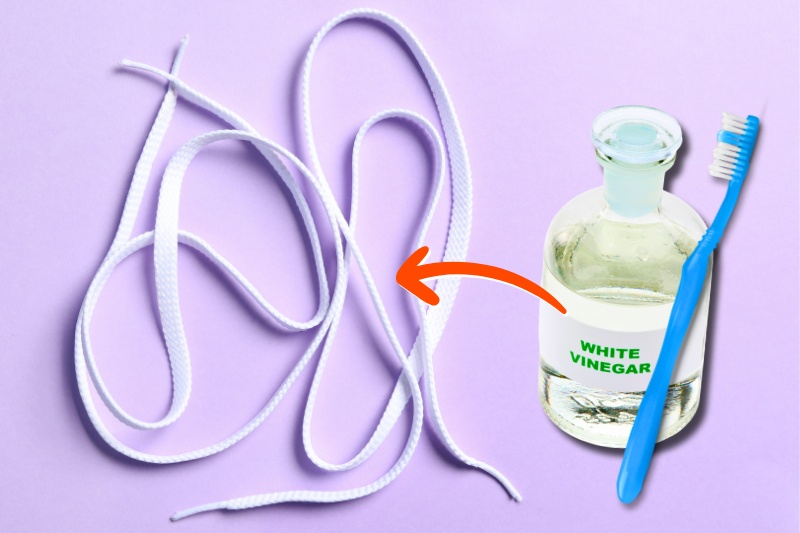
A more natural and less chemical-laden alternative to bleach is white vinegar. This method will require more work from you, but it’s a safe and straightforward way to clean shoelaces.
Follow these steps:
- In a bowl, mix one part water with one part white vinegar.
- Then, grab a clean toothbrush, dip it into the solution and rub the solution into each shoelace. Take your time doing this, as you will need to clean every bit of each lace.
- When you’ve cleaned each lace, rinse and hang them up to dry.
Use an off-the-shelf stain remover to treat blemishes
If you’re having trouble getting marks off your laces, turn to a specialised stain remover for help. Based on what the stain is, mud, wine or blood, for example, you can pick up a suitable stain remover.
After treating the stains, you can launder your shoelaces in the washing machine – remember to add detergent to the appliance.
Hydrogen peroxide
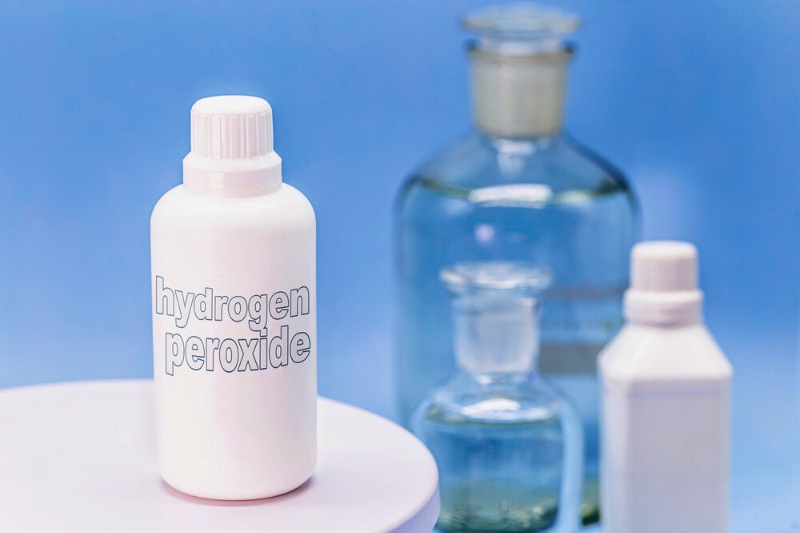
For white laces only, you can whiten them using hydrogen peroxide, a bleaching agent.
Follow these steps:
- Mix one part hydrogen peroxide with four parts warm water in a bowl.
- Allow the laces to rest in the liquid for an hour.
- After an hour, remove and rinse the shoelaces clean and hang them up to air dry.
Bicarbonate of soda

Follow these steps:
- Create a spreadable bicarbonate of soda paste by mixing water and bicarbonate of soda.
- When your paste is ready, cover each lace in the paste.
- Wait about 15 minutes for the paste to get to work.
- After the time has elapsed, rinse the shoelaces clean and dry them.
Use leather soap to clean leather laces
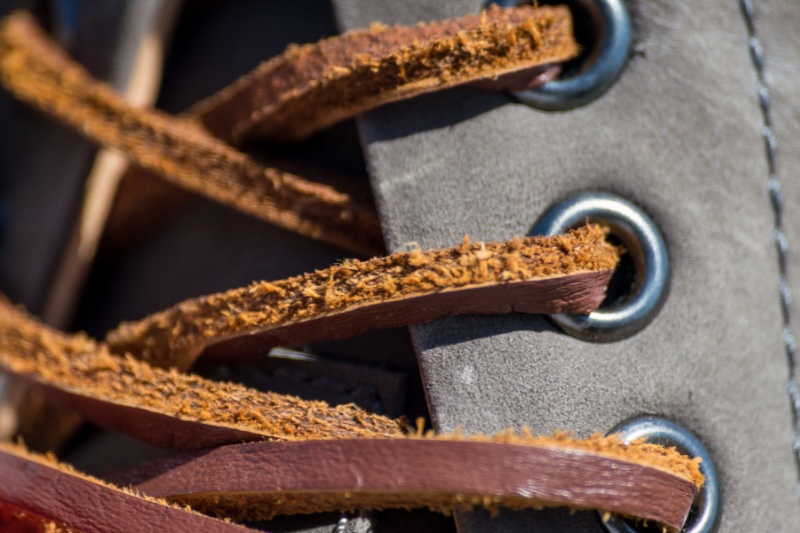
You cannot use bleach on leather shoelaces. Instead, clean them using a specialised leather soap that won’t damage or discolour the material.
Tip: Don’t tumble dry your shoelaces. The excess heat in the dryer can warp the plastic bits at the end of your laces – known as aglets – and sometimes shrink the lace. Air dry shoelaces first and foremost.

Bethan has a passion for exploring, reading, cooking and gardening! When she’s not creating culinary delights for her family, she’s concocting potions to keep her house clean!
